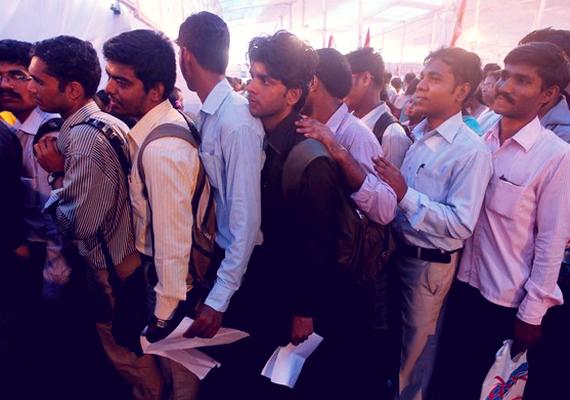A debate going on among policy circles is to how to estimate the number of employed people and number of jobs created in the country in a year or a month. After seven decades of independence, we do not have any strong mechanism to estimate the number of jobs and employed people in the country. This leads to unsubstantiated claims by the government that many jobs are being created and at the same time opposition complains of jobless growth. Therefore due to lack of data both government and opposition shoot in the dark on job creation and unemployment. “More than a lack of jobs, the issue is a lack of data on jobs. Our opponents will naturally exploit this opportunity to paint a picture of their choice and blame us,” said PM Modi in an interview with Swarajya magazine. Union government set up a committee under the leadership of former chief statistician of India T.C.A. Anant to bring transparency on jobs data.
As of now Indian has various means to measure unemployment in the country. Several data points on jobs have caused some kind of confusion. Ministry of statistics and programme implementation (MoSPI), Ministry of Labor And Employment, and Employees’ Provident Fund Organization (EPFO) have their own methods to measure jobs and unemployment. “Therefore, the Government has constituted a Technical Committee under the Chairmanship of former Chief Statistician Prof. T.C.A Anant to look into the above aspects and submit its report at the earliest,” said labor ministry in a statement.
Government has started taking measures to collect data on jobs. Employees’ Provident Fund Organization (EPFO) has more than 120 offices across the country and 6 crore people have subscribed to its provident fund scheme. EPFO has asked all of its subscribers to link their Aadhaar numbers to track jobs growth. Similarly, Employees State Insurance Corp. (ESIC), a self-financing social security and health insurance scheme has also asked its subscribers to link Aadhaar number as soon as possible. ESIC has almost 4 crore subscribers in from formal sector. Therefore Aadhar linking of EPFO and ESIC subscribers will help the government to track employment status of almost 10 crore workers. However, many subscribers may overlap but government could know this only after Aadhaar linkage of these subscribers. Aadhaar linking will also solve the problems of duplication, time lagging in service delivery and help in detection of fraudulent claimers. “Other than the jobs record, the move will speed up service delivery like payment of pension and faster settlement of PF claims. PF number portability will be smoother with Aadhar linkage with subscribers ID already having the bank account and PAN linked to it,” said a government official.
Opposition parties have repeatedly claimed of jobless growth in the country. However, when themselves in power, these parties never tries to bring transparency in jobs and unemployment data. The constituted committee under TCA Anant is expected to solve the job data problem before 2019 general election. Whatever the results of the election, the job data will definitely help the upcoming government in policy making and implementation. “There is a lot of debate going on around job growth in India. The monthly payroll data being released since April this year is facing a constant criticism—that it’s not accurate and suffers from duplication. Once you seed all the beneficiaries with Aadhaar you may be able to find a solution to this problem of duplication,” added another government official. The committee is expected to solve the job data problem for once and forever.
